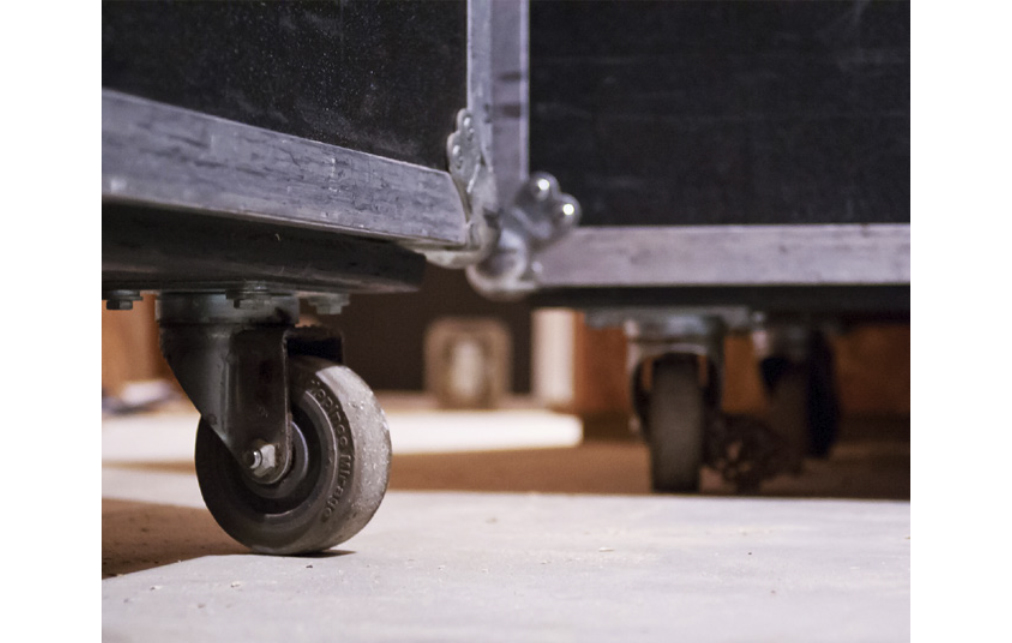Community, Leadership, Experimentation, Diversity, & Education
Pittsburgh Arts, Regional Theatre, New Work, Producing, Copyright, Labor Unions,
New Products, Coping Skills, J-O-Bs...
Theatre industry news, University & School of Drama Announcements, plus occasional course support for
Carnegie Mellon School of Drama Faculty, Staff, Students, and Alumni.
CMU School of Drama
Tuesday, November 07, 2023
Getting The Right Flow: Logical Approaches To The Live Show
ProSoundWeb: The corporate world calls it “workflow,” and in audio, we generally call it “prepping the show” as well as “load in-load out” and “set up-strike.” But none of it is quite adequate in describing effective practices in our overall approach to every show.
In running a small sound company in Texas for almost a decade, it occurred to me that there might be a lack of information about how to go about these common yet vital aspects of working in sound reinforcement. A look around the internet pretty much confirmed this.
Subscribe to:
Post Comments (Atom)

4 comments:
I found this article interesting because it depicts show production at a scale that is very different from what I am used to. I am used to a very large-scale production with a large, set crew, and a whole design team making artistic decisions. This article represents a situation that is more common, which is just a single sound guy bringing some gear to an event and setting up a sound system for a single evening.
While the scale of production is different, many of the ideas are the same. Sound flows in the same way and the ultimate goal is the same. That being said, in the kind of productions that we work on there is a lot more to do on a load-in. This means that proper truck packing and organization are even more important because you may have people working on the show who do not know this particular show, such as local hands.
I appreciate the detail breakdown offered in this article. After I began working on productions here at CMU, I realised there are many things in our roles and their ‘job descriptions’ that cannot be taught in class. Some things you only learn when you a crew (like sorting cables) and some things you learn by making a mistake and then go “oh, that didn’t work”. While I don’t have any objections with learning this way, it would be helpful – especially in the professional world – where you have all of this figured out before you start your gig. Your workflow, attention to detail, and general awareness are all small things that make a huge difference between a professional and an amateur. All things aside, being prepared helps oneself the most. We have all seen how much a load-in or strike could go when crew heads come-in prepared. It makes it so much easier for everyone else in the space too!
This article was super interesting and helpful. While sound engineering is not my primary academic interest, it is something I have some interest in and would like to know more about. The author of this article did a great job explaining his process in depth and answered many questions I had wondered about. I am the type of person to overthink and consider everything beforehand, so I appreciate when people go in depth about what they do in these situations. I found it super interesting how audio engineering for bands differs from audio for theater. There are things that the author discussed that were things I had never considered before - most efficient truck packing, replacing cables on stage mid-show, etc. Overall though, it does seem like the general ideas are the same and the two fields share many similarities, such as cable placement, efficiency in all processes, safety, and communication.
This was a very interesting read, especially because I’ve worked on the other side of this as a house technician for my local university which hosts a lot of smaller tours. However, where this is focused on a rental company that comes and sets up your system and such, mostly everything past the stage input is already set up, so the only concern is snakes, cables, power, etc. The most important thing said in this article is that if you can, put equipment on wheels. We have had some rather annoying bands do shows at the venue who would have all of their gear packed and stored in the most cumbersome way. The most egregious was this ballet company who had like 5 drops that they were flying, however none of them were in carts so we had to lug them from their truck and into the venue which was a pain in the ass.
Post a Comment